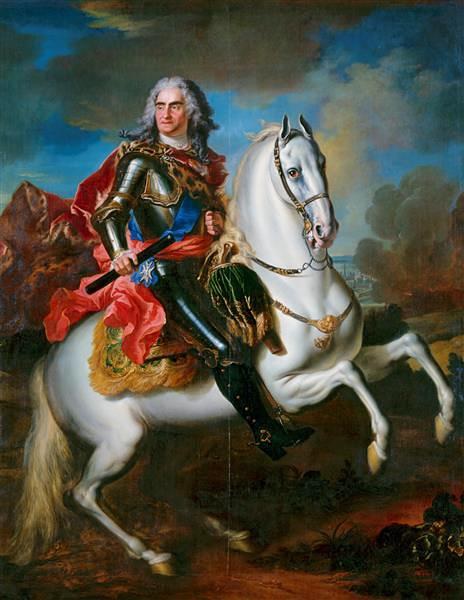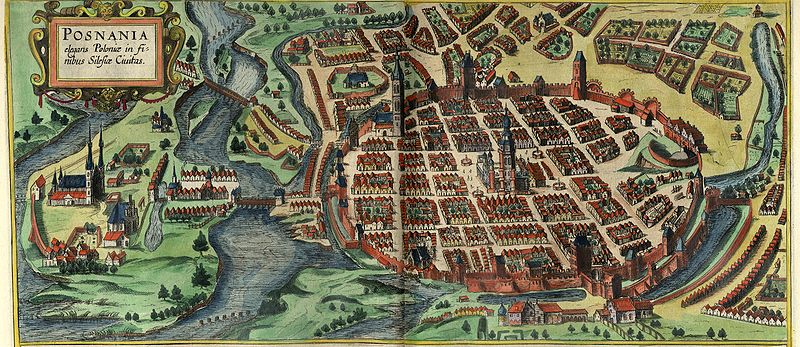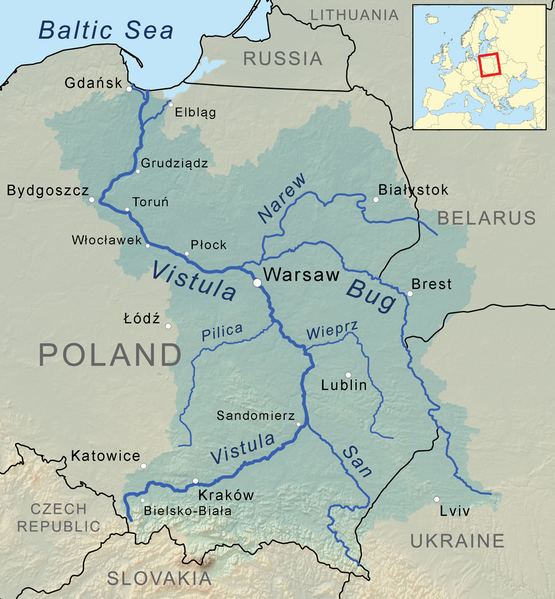A Victim of the Treaty of Altranstadt
 |
| Statue of Charles pointing to Russia |
Augustus
returned to Saxony, where to the surprise of many, the two kings[i] got on well together.
Their relationship was assisted because Augustus was married to Charles’s
cousin.
‘The two kings dined
together several times afterwards. King Charles always affected to give the
right hand to King Augustus.’[ii]
The person
most affected by the Treaty of Altranstadt was Patkul; the treaty demanded the
handing over of all Swedish traitors in Saxony. Patkul had been active in
ensuring that the Russian troops quartered in Saxony[iii] were cared for.
Following the refusal of the Saxon government to pay for their upkeep, Patkul
had extended his own credit to ensure that the soldiers did not starve. Eventually
Patkul arranged, with Peter’s approval, to assign the Russian soldiers to the
Austrians, who would fund their upkeep and for whom they would fight.
It was this
act of Patkul’s that was to see him designated a traitor; when he returned from
his betrothal ceremony[iv] he was seized by the
Saxons and thrown into prison. The shockwaves of this arrest were felt
throughout Europe. The representative of a sovereign ruler had been dealt with
outside diplomatic protocols[v]. Prince Golitsky demanded
his release, whilst Charles demanded the handover of the traitors.
Augugstus
Possibly
deciding that Peter, in Russia, was too far away to cause him immediate harm,
Augustus decided that he had no option but to comply with Charles’s demands.
‘And he [Charles] absolutely
insisted upon the giving up of General Patkul without delay.’[vi]
Patkul was
handed over to the Swedes on 27th March 1707; he was held in a cell,
chained to a stake. In October he was tried
by court-martial, ordered to deal with the prisoner with extreme severity.
‘Charles XII, forgetting
that forgetting that Patkul was the Czar’s Embassador; and considering only
that he was born his subject, ordered a council of war to pass sentence upon
him with the utmost rigour.’[vii]
Patkul was
sentenced to be broken on the wheel, then beheaded and quartered. His body was
not buried, but displayed as a warning to other would-be traitors.
Charles Turns East
Having
removed two of his three opponents, Saxony and Denmark, Charles now turned his
attention to Russia. To avoid a war on Russian soil Peter looked for allies in
Europe; promising the Dutch help against their wars with the French; promising
France help against England and he asked England to threaten war against Sweden
to bring Charles to the negotiating table.
Charles was
like a man possessed and was not interested in anything other than bringing
down Russia. He was now convinced of the superiority of his own decisions, no
longer listening to his own advisers, friends and family. Peter was offering
all kinds of inducements to come to terms, including most of his gains on the
Baltic, with the exception of St Petersburg, Schlüsselberg-Nöteberg and the Neva River connecting
them.
‘I will sacrifice the last
Swedish soldier rather than cede Nöteberg’[viii]
was Charles’s
considered response. Peter was to be
punished as Augustus had been punished. His army was one of the best in Europe
and at this time Peter’s successes in the Baltic had not erased the impression
of a shambolic army. He informed his client king Stanislaus
‘The Tsar is not yet
humiliated enough to accept the conditions of peace I intend to prescribe.’[ix]
Charles
intended to dethrone Peter, possibly restore the old regime, cancel Peter’s
reforms and abolish the Russian army; in effect thrust Russia back in the
medieval period from which Peter had been attempting to rescue his country.
Charles’s
officers assumed that the king would strike first at Russia’s new Baltic
provinces and reverse the losses of recent years. But Charles’s pan was more
grandiose; he intended to strike at the country’s heart, Moscow. He believed
that only by humiliating Peter personally in the centre of his country[x], could he achieve lasting
peace for Sweden. Peter was encouraged to believe that the Baltic was Charles’s
objective. When the march on Moscow began subsidiary operations in the Baltic
would start.
Charles’s
troops in Saxony were incremented by German Protestant volunteers, eager to
support the Protestant monarch who had freed them from Catholic domination. The
Swedish army swelled from 19,000 to 32,000 and another 9,000 were being drilled
in Swedish Pomerania. There were an additional 26,000 Swedish soldiers in
Lithuania and Finland, waiting to join the fight.
On August 27th
1707 Charles rode out of Altranstadt castle on his latest and greatest
adventure. During his process through Silesia the peasantry treated Charles and
his army as conquering heroes. He even dropped in for a cosy chat with Augustus
in Dresden and visited his aunt.
Preparations for War
Peter was
aware that Charles intended to invade Russia across its border with Poland. To
stop the Swedes living off the land Peter ordered Cossacks and Kalmucks into
Poland to create an area of devastation, from which supplies would be
unobtainable[xi].
His attempts to recruit soldiers was assisted by the Swedes who had cut the
first two fingers of the right hand of 46 Russian soldiers taken prisoner and
then returned to Russia as an object lesson. Peter’s answer was simple;
‘For he intended to place
one of [the maimed solders] in every regiment, who might be living remonstrance
to their companions what usage they could expect from their merciless enemies
in case they suffered themselves to be captured.’[xii]
Count Boris Sheremetev
Peter also
ordered new fortifications for Moscow; he spent the early summer in Warsaw,
where he fell ill and it was not until September that he started the long
journey back home. On the way he inspected the fortifications and spoke to army
commanders. It was decided to withdraw the infantry from Poland and placed
under Sheremetev’s command in Minsk. Menshikov was given command of all the
cavalry in Poland.
During this
period Peter suffered from a prolonged bout of ill-health, exacerbated by the
bad news from the Ukraine, where Bulavin was running riot. And it was during
this period that he secretly married Catherine in November 1707. On 6th
January, after a period of time spent in Moscow inspecting the defence works
and standardising ambassador’s pay amongst other less serious matters, Peter
left for Minsk and was en route when he learnt that Charles was advancing
through Poland.
The Road to Russia
Poznan in the 17th century
As the
Swedish army marched into Poland they were met by scenes of devastation. The
Russian cavalry stayed out of reach. The Swedes camped outside Poznan for two months and
when they struck camp in November Charles left 5,000 dragoons and 3,000
infantry to stabilise Stanislaus’s insecure throne. The army avoided Warsaw and
on 31st December succeeded in crossing the Vistula, by marching northwards
to avoid the Russians guarding the far bank.
The harsh
weather and bad roads, some just forest trails, took their toll and many of the
German dragoon regiments suffered desertions. The Swedes took to brutalising
the peasants for their stores of food, killing children if food was not
forthcoming or firing villages after killing the inhabitants. Many of the
peasants turned to guerrilla warfare, sniping at the enemy from the thick woods.
Arriving at Kolno, the Swedes found the
Russians again conspicuous by their absence and Charles decided to make for Grodno, where Russian troops
were massing to defend this strategic town. Charles rode ahead with a few
hundred men and to find the bridge across the river Neman still standing and
guarded by only 2,000 cavalry. In the battle fought in the early afternoon
gloom the Russians, attacked from the front and rear, retreated into the town,
which held the Czar himself.
Grodno in the 17th century
Overnight,
believing that the whole Swedish army was outside the town, the Russians
decamped and in the morning the Swedes rode into a deserted town. The Russians
set up a new defensive line on the River Berezina.
Berezina River
Charles and
his exhausted army followed; but Charles was pushing his men too hard, having
driven them over five hundred miles, with little food and virtually no forage
for the horses. The army went into winter quarters on 17th March,
northwest of Minsk.
The Summer Campaign of 1708
In early May
the Swedes began preparing to move; the troops scoured the countryside for
provender before marching off towards the Berezina.
‘The King of Sweden, who had
foreseen these difficulties, had provided biscuit for the subsistence of his
army, so that nothing stopped him in his march. After he had crossed the forest
of Minsky……….he found himself on the 25th June 1708 before the River
Berezine, over against Borislow.’’[xiii]
For Charles,
although he did not know it, this march through Russia was to end at Poltova.
The Swedes converged on Minsk in early June
Meanwhile
Peter had withdrawn his army back across the Dnieper River. And then
at a council of war Peter ordered that all along the roads from where the
Swedes were encamped the land was to be destroyed; creating a zone of
devastation 120 miles deep. The town of Dorpat was levelled.
At this time
of great tension Peter fell ill again; writing to Golovin
‘I beg you to do everything
that can possibly be done without me. When I was well, I let nothing pass, but
now God sees what I am after this illness which this place and Poland have
caused me, and if in these next few weeks I have no time for taking medicine
and resting, God knows what will happen.’[xiv]
Having
avoided the Russians on the Berenzina, Charles received information that the
Russians were mustering near Golovchin[xv]. He decided to seek out
the Russians and fight, rather than march around them, as he had successfully
done three times already. Charles defeated the Russians, but this time the
Russians stood and fought, rather than run as had so often happened in the past[xvi]. Sheremetev’s troops had
not been involved in the fighting and he was able to withdraw them in good
order.
Bibliography
Natasha’s
Dance – Orlando Figes, Penguin Books Ltd 2002
Russia and
the Russians – Geoffrey Hosking, The Penguin Press 2001
Peter the
Great – Robert K Massie, Abacus 1992
The History
of Charles XII of Sweden – Mr de Voltaire, C Davis & A Lyon 1732
www.wikipedia.en
[i]
As a sop to his pride Charles had allowed Augustus to retain the title of king
[ii]
The History of Charles XII - Voltaire
[iii]
Trapped there by the presence of the Swedes between themselves and Russia
[iv]
Disillusioned with the whole sorry affair of his native Livonia Patkul planned
to retire to Switzerland, where he had purchased an estate, and marry a rich
widow
[v]
The Saxon government may have been wishful to remove a witness of their poor
treatment of the Russian soldiers, who had been close to starving before Patkul
assisted them
[vi]
The History of Charles XII - Voltaire
[vii]
Ibid
[viii]
Peter the Great - Massie
[ix]
Ibid
[x]
As he had done for Augustus
[xi]
Charles had shown a distinct preference to supply his armies from the lands
they were passing through
[xii]
Peter the Great - Massie
[xiii]
The History of Charles XII - Voltaire
[xiv]
Peter the Great - Massie
[xv]
A small village on the River Babich
[xvi]
And the numbers on both sides had been roughly equal






Hello Helen,
ReplyDeleteI am putting together a magazine of articles on the Great Northern War. I know, a niche area, but I am a history lover and several authors and enthusiasts encouraged me to put something together in English if they contributed articles and I undertook the economic risk and was the editor. I have 13 articles so far and hope to get a few more. I am trying to balance it some and I have several Swedish contributors and US/UK writers on Swedish perspectives of battles, but am looking to add some Russian view topics. We have an article on the Emergence of the Russian Army and one in process by a Russian author on Russian Sieges of the War (mainly in the Baltic States). Your article on Peter is well written and has some interesting things in it beyond just the war items. I have a similar article on Augustus the "Strong." If you would be interested in contributing part (or all depending on length) of your article on Peter to be published in the magazine, let me know. The copyrights stays yours, I would just have a license for the magazine. It is the same for all the other authors. There will be a nice biographical page on the authors and some illustrators who have done some art for the magazine. If your interested or would like some more information, let me know. Any response should go to my email: info@thehistoricalgamecompany.com.